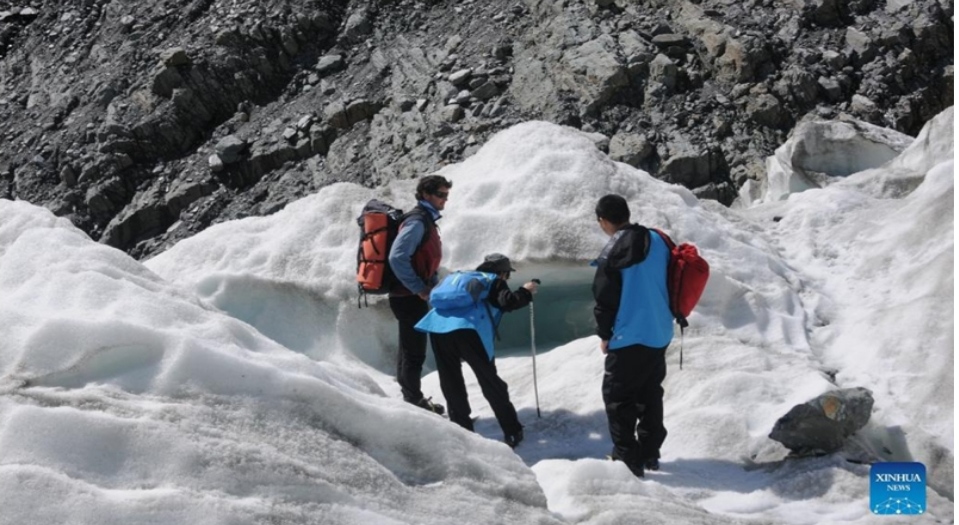Dimming sun’s rays could lead to global climate disaster
Geoengineering too risky: Experts

Tourists hike on Fox Glacier on the west coast of New Zealand’s South Island on Oct. 13, 2021. Fox Glacier is one of the most accessible glaciers in the world. In the past decades, the glacier retreated significantly due to global climate change.
Planetary-scale engineering schemes designed to cool Earth’s surface and lessen the impact of global heating are potentially dangerous and should be blocked by governments, more than 60 policy experts and scientists said on Monday.
Even if injecting billions of sulphur particles into the middle atmosphere, the most hotly debated plan for so-called solar radiation modification (SRM), turned back a critical fraction of the sun’s rays as intended, the consequences could outweigh any benefits, they argued in an open letter.
“Solar geoengineering deployment cannot be governed globally in a fair, inclusive and effective manner,” said the letter, supported by the journal WIREs Climate Change.
“We therefore call for immediate political action from governments, the United Nations and other actors to prevent the normalization of solar geoengineering as a climate policy option.”
An increase of 1.1 C above mid-19th century levels has already boosted the intensity, frequency and duration of deadly heat waves, droughts and megastorms.
The failure to reduce the greenhouse gas emissions that drive global heating has led some policymakers to embrace solar geoengineering, widely dismissed not long ago as more science fiction than science, in order to buy time for a more durable solution.
It has long been known that injecting a large quantity of reflective particles into the upper atmosphere could cool the planet.
Nature sometimes does the same: debris from the 1991 eruption of Mount Pinatubo in the Philippines lowered Earth’s average surface temperature for more than a year.
But the open letter said there are several reasons to reject such a course of action.
Artificially dimming the sun’s radiative force is likely to disrupt monsoon rains in South Asia and western Africa, and could ravage the rain-fed crops upon, several studies have shown.
“Stratospheric sulfate injection weakens the African and Asian summer monsoons and causes drying in the Amazon,” the Intergovernmental Panel on Climate Change said in its most recent scientific assessment.
Scientists also worry about so-called termination shock if seeding particles were to suddenly stop.



